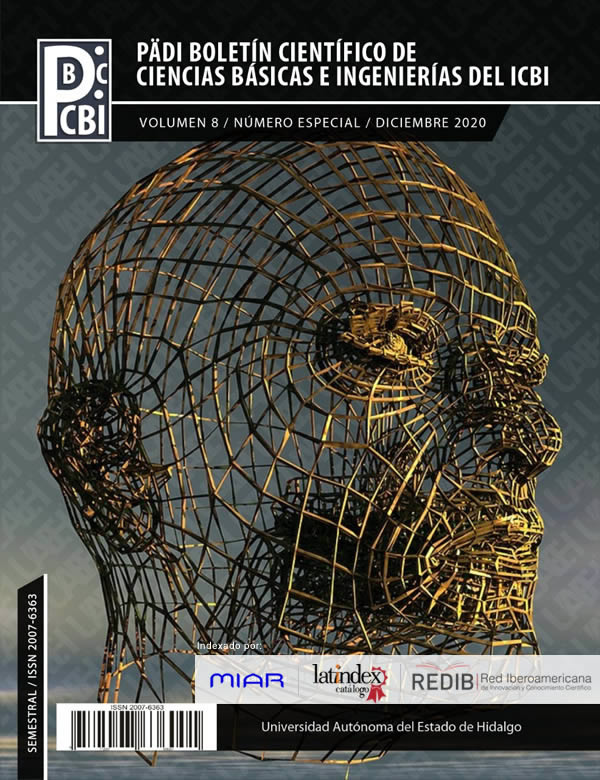Evaluation of the cytotoxic activity of microalgal chlorophyll derivatives in cell lines
Abstract
Environmental, genetic factors as well as bad habits of contemporary life have deteriorated their quality in the population, increasing chronic degenerative diseases such as heart disease, Diabetes mellitus or cancer. In the case of cancer, surgery or chemotherapy drastically affect the quality of life of the patient. Recent researches seek harmless substances for treatment such as phototherapy, which is based on the administration of oxo chlorophyll as a derivative of the pigment, which is absorbed by cells with high cell division, such as cancer cells, and activated by exposing the cells that accumulated it to red light causing the formation of free radicals that alter cellular metabolism. Therefore, chlorophyll A was obtained from Chlorella spp. in photobioreactors with modified Bold basal medium, using rice starch as carbon source in 12 h photoperiods. Chlorophyll A was purified by silica gel column chromatography eluting with absolute ethanol and it was concentrated by rotary evaporator. Oxychlorophyll A was obtained by pyrolysis under anoxic conditions and by acidification. Its antioxidant activity was measured by the guaiac method. Its cytotoxic effect in Artemia salina was determined at 1:13, 1:20 and 1:40 dilutions of oxochlorophyll A. Higer cytotoxicity was registered than that obtained by pyrolysis. LD50 calculated (Graphpad Prism) was 1.198%. Future work will evaluate its cytotoxic effect in healthy and malignant human cell lines and in mice.
Downloads
References
Angulo, E., Zárate, A., Florez, J. Z., Barrios, F., & Zapata, C. (junio de 2012). Propagación de la microalga Chlorella sp. en cultivo por lote: Cinética DEL. La Serena, Chile.
Arredondo Vega, B. O. (2007). Determinación de peso seco y contenido orgánico e inorgánico. La paz, Baja California, Mexico. Recuperado el 03 de Marzo de 2020, de https://www.researchgate.net/publication/281783352_Determinacion_de_peso_seco_y_contenido_organico_e_inorganico
Caez Perez, A. (2005). Preceso de fotocatalisis de clorofila activada. Bogota, Colombia. Recuperado el 20 de Febrero de 2020, de https://repositorio.uniandes.edu.co/bitstream/handle/1992/10539/u258425.pdf?sequence=1
Cappugi P, C. P. (2001). Topical 5-aminolevulinic acid and photodynamic therapy in dermatology. A minireview. J Chemother.
Hynninen, P. H., S., L. T., & Mesilaakso, M. (23 de enero de 2006). Demethoxycarbonylation and oxidation of 132(SIR)-Hydroxy-clorophyll a to 132-demethoxycarbonyl-oxo-chlorophyll a and Mg-purpurina-18 phyty lester. Helsinki, Finland.
INEGI. (2018). INEGI. Recuperado el 08 de Febrero de 2020, de Estadisticas de salud: https://www.inegi.org.mx/
Lallana, V., & Lallana, M. d. (2003). Manual de Prácticas de Fisiología Vegetal. Recuperado el 15 de Enero de 2020, de http://www.fca.uner.edu.ar/files/academica/deptos/catedras/fisiologiaveg/m_didactico/manual_practicas/ExtPig_bED.pdf
Morales A, P. P. (2005). Cytotoxic and proapoptotic activity of ent-16â-17á-dihydroxykaurane on human mammary carcinoma cell line MCF-7. Cancer Lett, 218:109-16.
Morton CA, B. S. (2002). Guidelines for topical photodinamic therapy. British Photodermatology group. Br J, 146.
Olmo, M. (2012). Los Pigmentos en la Fotosíntesis. Obtenido de hyperphysics:http://hyperphysics.phyastr.gsu.edu/hbasees/Biology/pigpho.html
Pacheco, J. (2011). Determinación de la toxicidad aguda (CL50) del extracto de polvillo de carbón frente a larvas de Artemia franciscana. Cartagena Colombia.
Rappaport, S. M., Li, H., Grigoryan, H., Funk, W. E. & Williams, E. R. Adductomics: characterizing exposures to reactive electrophiles. Toxicol. Lett. 213, 83–90 (2012).
Sandoval Riofrio, M. A. (Febrero de 2013). Diseño, construccion y propuesta en marcha de un fotobiorreactor piloto para el crecimiento de la microalga Chlorella sp. Quito, Ecuador. Recuperado el 21 de Enero de 2020, de http://repositorio.espe.edu.ec/bitstream/21000/6487/1/T-ESPE-047130.pdf
Tolosa, A. (16 de Septiembre de 2016). Importancia de la validación de las líneas celulares utilizadas en investigación. Obtenido de Genotipia: https://genotipia.com/genetica_medica_news/lineas-celulares-validacion/














